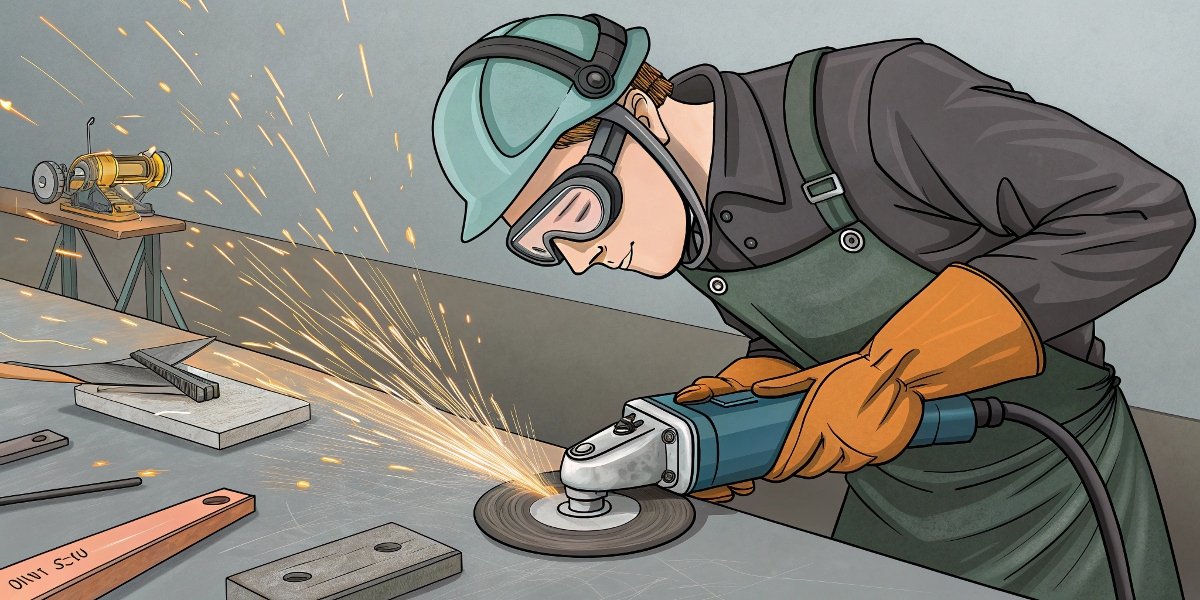
How to cut hardened steel with an angle grinder?
You’re facing a piece of hardened steel—a drill bit, a file, or a high-strength bolt—and it’s resisting all your efforts. Using the wrong approach will just chew through standard discs, overheat the metal, and get you nowhere fast.
Yes, you can cut hardened steel with an angle grinder, but only if you use the correct abrasive disc. [1, 2] Standard discs will fail; you need a specialized wheel, such as a diamond cutting disc or one made from ceramic alumina, to succeed. [1, 2]
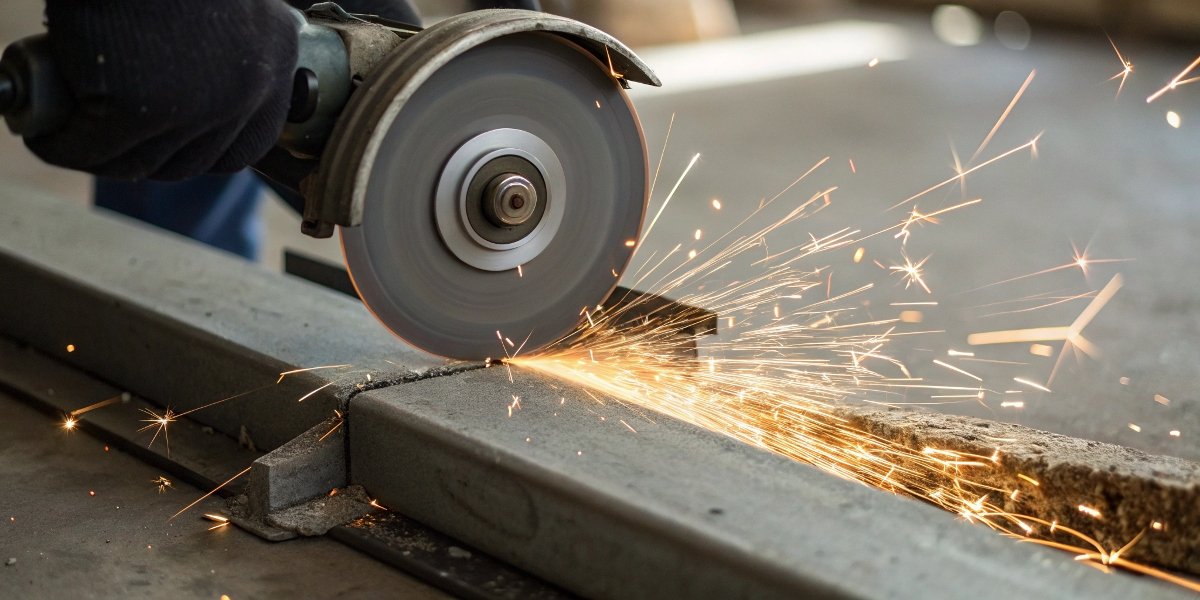
In my nearly three decades of manufacturing abrasives, I’ve learned one absolute truth: there is no fixed combination of machine and disc. My insight is that the choice of the grinding wheel must be determined by the material. Likewise, the tool itself is selected based on the material’s dimensions. Cutting hardened steel1 is the perfect example. It’s a demanding task that requires a specific solution, not a general-purpose one. Let’s get into how you can choose that solution correctly.
Can angle grinders cut through hardened steel?
You have a tough cutting job, and you need to know if the angle grinder in your hand is even capable. Will it handle the extreme hardness, or are you setting yourself up for a frustrating and costly failure?
Yes, an angle grinder is a very effective tool for cutting hardened steel, provided you use a disc designed for it. [1, 2] Diamond cut-off wheels are a top choice, as they cut cleanly without wearing down quickly. [1, 3] Advanced abrasive grains like ceramic alumina are also excellent. [2]
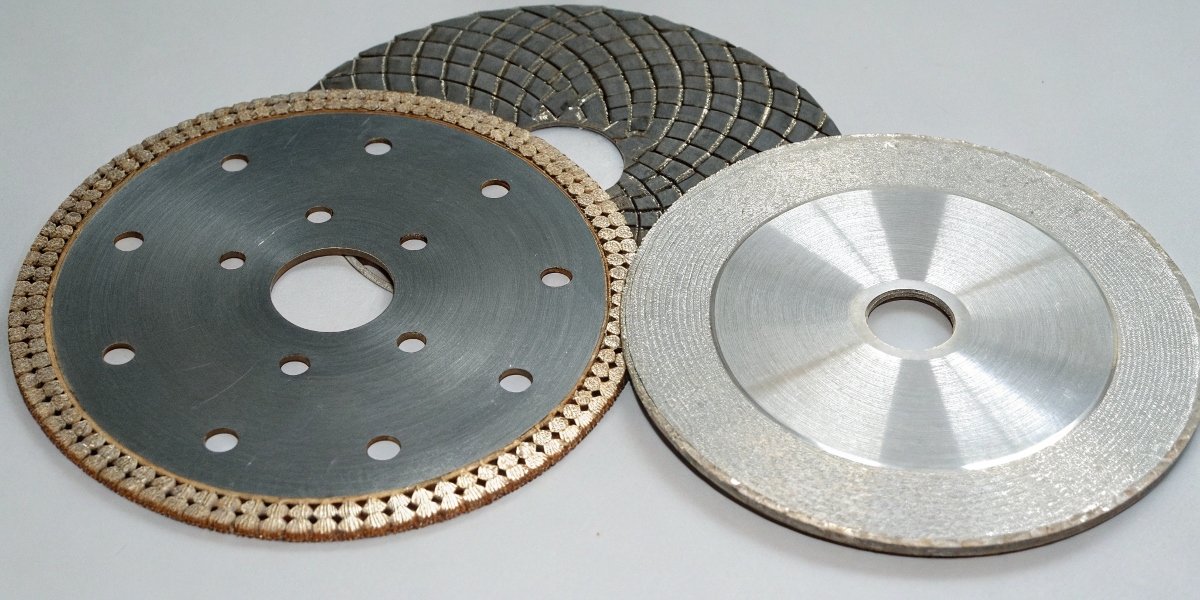
From our factory’s perspective, this is a materials science problem. Standard aluminum oxide discs2, the common brown ones, are simply too soft to effectively cut hardened steel. The hardness of the steel will tear the abrasive grains3 from the disc before they can do any real cutting. This is why you must upgrade. Diamond is the hardest material, making it ideal for cleanly slicing through hardened alloys. It cuts rather than grinds, generating less heat. Another excellent choice is ceramic alumina4. These grains are engineered to be tougher and to fracture in a way that constantly exposes new, sharp cutting edges. As a purchasing manager, choosing these premium discs5 for hardened steel applications is not an extra cost—it is a requirement for getting the job done efficiently and safely.
Is hardened steel easy to cut?
You hear the term "hardened steel" and know it’s tough, but how difficult is the cutting process itself? Understanding the challenge helps you prepare, use the right technique, and avoid damaging the material or your tools.
No, hardened steel is very difficult to cut by design. [4] The heat treatment process that gives it high strength and wear resistance also makes it resistant to sawing and drilling. It is tough, but it can also be brittle and prone to cracking under stress. [5]
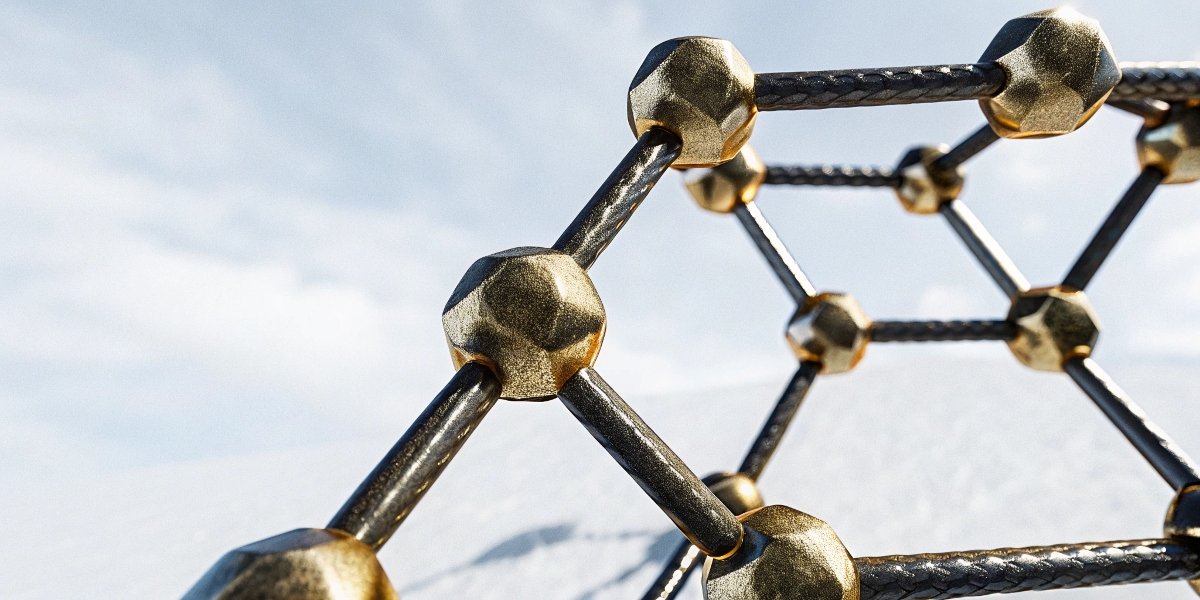
The difficulty lies in the steel’s very nature. It has been heated to a high temperature and then rapidly cooled, or quenched. This process rearranges its crystal structure, making it incredibly hard. When you try to cut it, you are fighting against this engineered toughness. The process generates a massive amount of friction and heat. That heat can be a problem, as it can ruin the "temper" of the steel near the cut, softening it and changing its properties. This is why the choice of disc is so important. A diamond wheel or ceramic disc cuts more efficiently, which minimizes heat buildup. Remember, you can’t just power through it. The material demands a specific approach—let the abrasive do the work and don’t apply excessive force, which could cause the brittle steel6 to fracture unexpectedly.
How thick of steel can an angle grinder cut?
You’ve got the right disc for hardened steel, but now you need to know the grinder’s physical limits. Can your 4.5-inch grinder handle that thick plate, or do you need the power and reach of a 9-inch model?
The cutting depth is limited by the disc’s radius. A 4.5-inch grinder can handle up to about a 1/2 inch of steel effectively. A larger 9-inch grinder has the power and disc diameter to cut through steel over 2 inches thick.
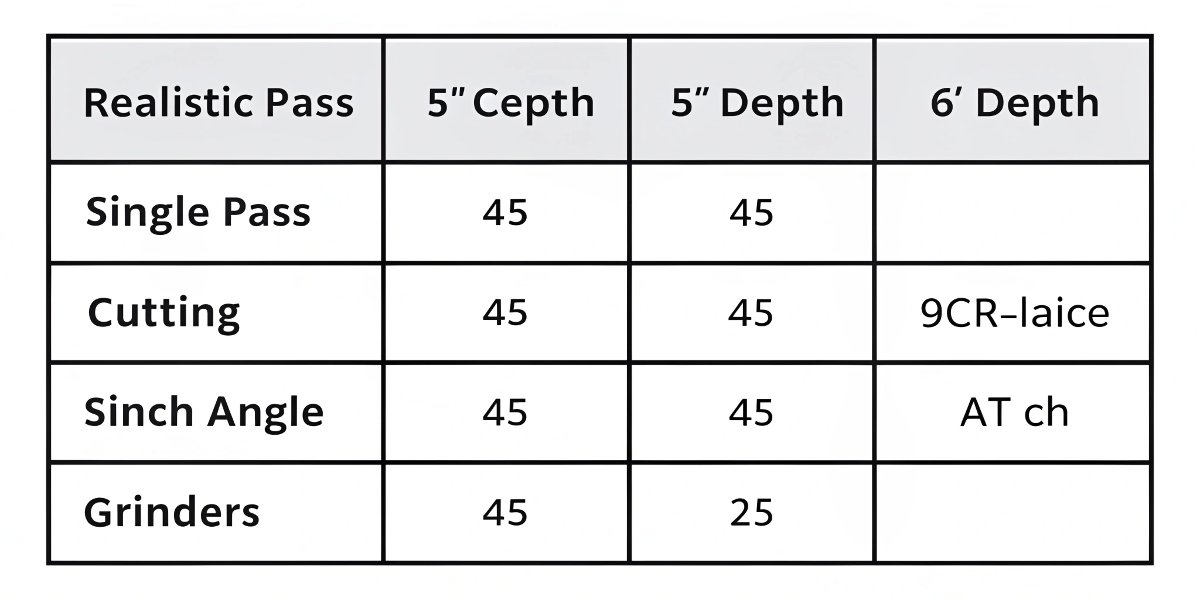
The real-world cutting depth7 is never half the diameter of the disc. You always have to subtract the diameter of the locking flanges and the physical size of the grinder’s gear housing, which get in the way. A brand-new 4.5-inch (115mm) disc might only give you about 1 to 1.5 inches of maximum cutting depth. For thicker materials, especially hard ones, this is a major limitation. If you are cutting hardened plate that is 1 inch thick, you will need to make passes from both sides. A large 9-inch (230mm) grinder is the tool for deep cuts. It has the raw torque and the disc radius to slice through thick stock more efficiently. This comes back to my core insight: you select the machine based on the material’s dimensions. For thin hardened steel parts, a 4.5-inch grinder with a diamond disc is perfect. For thick plate, you need a bigger machine.
What is one common mistake to avoid when using an angle grinder?
You have the right tool and the right disc, but one bad habit can still lead to disaster. In high-stakes work like cutting hardened steel, avoiding common mistakes is critical for safety and for getting a clean, successful result.
The most dangerous mistake is applying too much force, trying to rush the cut. [11] When cutting hard materials, you must let the speed of the disc do the work. Forcing the tool can cause a violent kickback or overheat and shatter the disc. [11]
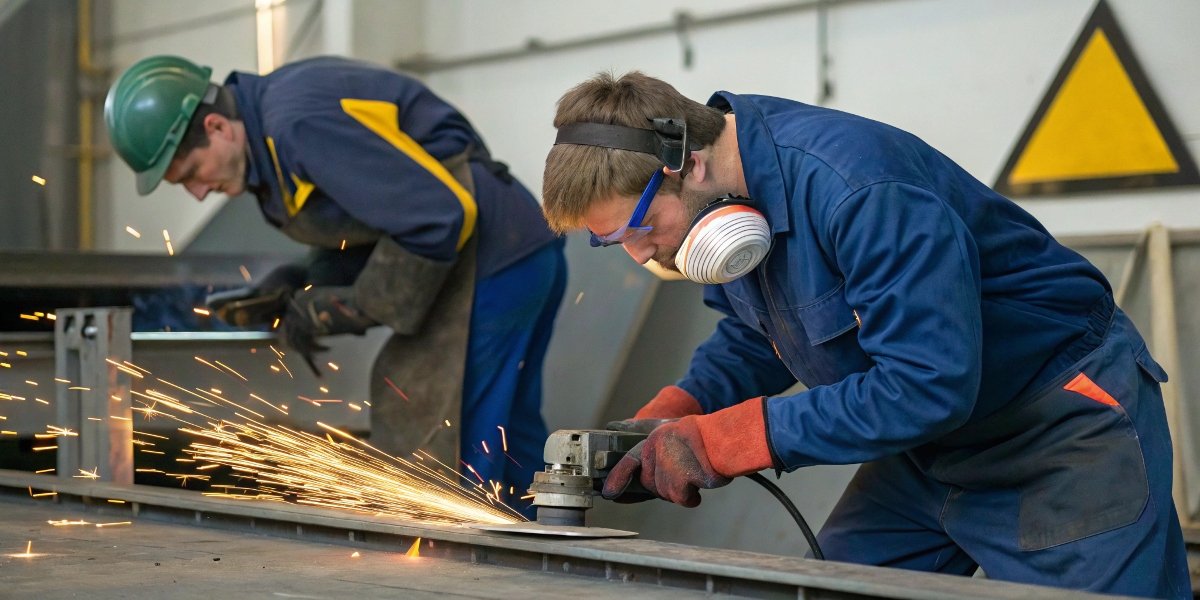
I see this mistake more than any other. It is a natural impulse to push harder when a material is tough. But with an angle grinder8, this is completely wrong and very dangerous. The abrasive disc works by having thousands of tiny, sharp points moving at over 10,000 RPM. It’s the speed that cuts, not the pressure. When you push down hard, you are just creating more friction and heat. This can ruin the steel’s temper and overload the grinder’s motor. Most importantly, if the disc binds while you are applying heavy force, the grinder will kick back with incredible violence. The proper technique is to use a light, consistent pressure and let the disc move through the material at its own pace. Trust the engineering of the abrasive. A high-quality diamond or ceramic disc, like the ones we make at RL, is designed to cut effectively with minimal force.
Conclusion
To cut hardened steel, you must match the abrasive disc to the material. There is no single best combination; success comes from choosing the right tool and disc for the specific job, ensuring both safety and efficiency.
-
Understanding the properties of hardened steel is crucial for effective cutting techniques. ↩
-
Discover the applications and limitations of aluminum oxide discs in metal cutting. ↩
-
Gain insights into how different abrasive grains impact the efficiency of cutting tools. ↩
-
Explore the advantages of ceramic alumina in abrasive applications for better cutting performance. ↩
-
Discover the benefits of using premium discs for cutting tough materials like hardened steel. ↩
-
Understand the characteristics of brittle steel and its implications for cutting techniques. ↩
-
Understand the limitations and capabilities of angle grinders regarding cutting depth. ↩
-
Learn how angle grinders operate and their effectiveness in cutting various materials. ↩
Written by
leeon
You may also be interested in:
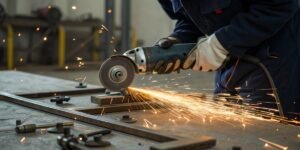
How do you cut bolts with an angle grinder?
Struggling to make a clean cut on a stubborn bolt? Using an angle grinder can feel intimidating, but it is a fast and effective method
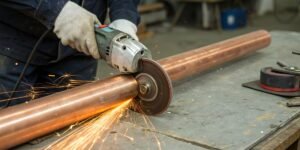
Can I use an angle grinder to cut a copper pipe?
Struggling with a quick copper pipe cut? Worried about damaging the material? An angle grinder is a fast solution, but using it wrong can be
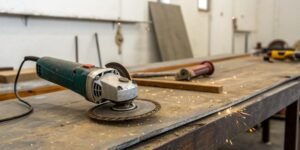
Can an angle grinder cut meat and bones?
Struggling to cut tough bones? Thinking of grabbing your angle grinder for a quick solution? This powerful tool seems like an easy answer, but it’s
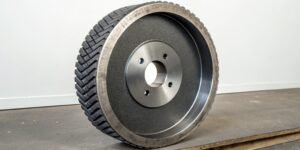
What's the application of CBN Wheels?
Struggling with grinding hard steels? Frequent wheel changes and poor finishes can hurt your bottom line. We have found that CBN wheels provide the durability
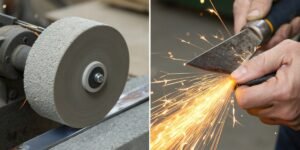
What is the difference between grinding and honing a blade?
A dull blade is a frustrating problem. It slows down production and ruins your workpiece. Using the wrong technique to fix it can cause permanent
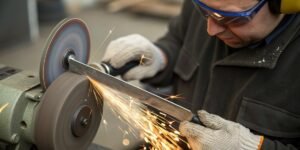
How to sharpen a knife on a bench grinder?
Is your dull knife slowing you down? A bench grinder seems like a quick fix, but you’re worried about ruining the blade. You need a
